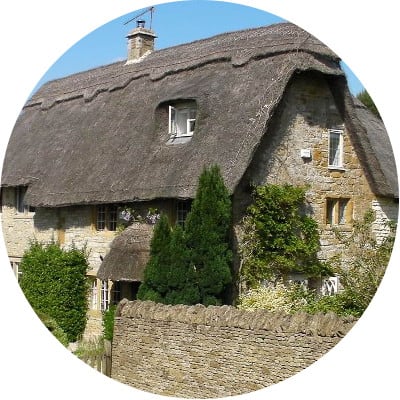Compare listed building home insurance now
Cheap Listed Building Home Insurance
- Quotes from UK insurance providers
- One short form – save time & money
Policies and deals from industry leading insurance providers, including
Related Insurance
What people have to say about us
Only been insured for a month, sogood so far
Carole
Wolverhampton, United Kingdom
Quotezone found me a very favourable alternative quote for my insurance
Lynne
Oldham, United Kingdom
4.76/5 from 3656 customer reviews
How to insure your house if it’s a listed building
Are you the proud owner of a beautiful listed building? The good news is that means your home has cultural, historical or architectural importance.
The bad news? Your home insurance is likely to cost more.
The owners of listed buildings often have to apply for planning consent from their local planning authority before they undertake any significant repair work, and often have to agree that those repairs are made using like-for-like building materials which could end up making the work rather more costly.
That’s one reason these properties can cost more to insure.
In addition, some older listed buildings are also more prone to damage from harsh weather conditions, which again can make them a higher insurance risk.

Of course, the age of the property isn’t the only factor Historic England in England, Historic Environment Scotland in Scotland, Cadw in Wales, or the Northern Ireland Environment Agency in Northern Ireland take into account when deciding whether or not a building should be listed…but it certainly plays a role.
That’s why most homeowners in the UK probably won’t be too surprised to learn that properties built during the 1700s (or even earlier) are probably listed buildings, while a growing number of properties constructed during the 1800s and early 1900s are also being given listed building status.
However, what might be less obvious is that even some properties built much more recently (in the 1970s or 1980s, for example) may have been granted listed building status if they have some sort of cultural or architectural significance.
Grade I listed buildings often cost more to insure than Grade II buildings, but both grades will likely attract higher premiums than a newly built house or apartment.
That’s why it’s critical that you compare insurance quotes from a wide range of providers before deciding on which one to go with – that way you’ll be more likely to find a suitable insurance policy for your listed building at a price that won’t break the bank.
Compare listed building insurance now
Home insurance for listed buildings – how to reduce your premiums
Insuring a listed building is often more costly than it would be if the property didn’t have listed status, but if you own a Grade I or Grade II property there are a few things you can do to improve your chances of finding a cheaper quote. For instance, you could:
- Install a burglar alarm (some alarms can be installed without damaging the walls or doors of a property, but if your building is listed it would be best to check with your local planning authority first)
- Install smoke alarms, which can reduce the risk of fire damage (Some fire alarms use radio frequencies rather than cabling and wiring, which can help to mitigate damage to the building’s walls and ceilings)
- Ensure the property isn’t left unoccupied for more than a month at a time, since unoccupied properties have a higher risk of water damage, vandalism and break-ins
- Install high quality locks on the property’s windows, which can reduce the risk of break-ins (although it’s worth stressing that owners of listed buildings may need to seek consent from their local planning authority before installing these locks, and if the window frames are original and of historical significance consent may not be given)
- Agree to a higher excess, which should reduce the upfront cost of your building insurance.
Why does it cost more to insure a listed building?
Insuring a listed building brings extra complications because the property’s status as a building of cultural or architectural significance often means the owner is obligated to keep the building as close to its original state as possible.

This makes extensions, conversions or other structural alterations much more difficult (and in some cases impossible), but from an insurance perspective it can also mean the homeowner may be forced to pay for expensive construction methods and like-for-like building materials if the property ever sustains storm damage, flood damage or fire damage.
In addition, if the listed building is older it may be more fragile and prone to weather damage.
Is it true that some listed building insurers won’t insure a property with a thatched roof?
Yes, some home insurance companies in the UK may refuse to insure a building with a thatched roof, because of the increased insurance risk they can pose.
Not only is this type of listed building likely to be more costly to repair because there are now relatively few professional thatchers working in the UK, but thatch is also viewed as a significant fire risk by many insurers.
Having said that, there are some providers that may be willing to offer you a policy, so the best thing to do is to a use a listed building insurance comparison service.
Does it cost more to insure a timber-frame building?
Yes, timber-frame buildings often cost more to insure because many insurance providers see them as a higher fire risk.
In fact, some insurers may refuse to insure timber-frame properties at all, so if you own this type of property it’s best to use an insurance comparison platform to find a suitable policy for your home.
How much does Grade 2 listed building insurance cost?
There is no straightforward answer to that question, because each insurance provider uses a slightly different calculation when working out your premiums, and details about your specific property beyond its graded building status will impact that calculation too.
For example, if your property is a timber frame building, has a thatched roof, has a partial flat roof, has a history of subsidence, has sustained flood damage in the past or is left unoccupied for extended periods of time your premiums may well be adjusted upwards.
The best strategy, then, is to use an online comparison platform like Quotezone.co.uk to compare quotes from a wide range of listed building insurance providers, and then go with the company that offers the best cover at the lowest price.
Is Grade 1 listed building insurance more expensive?
It’s certainly not a hard-and-fast rule, but Grade I listed buildings are often older than Grade II properties, which means in some cases they may be more fragile and prone to weather damage.
Older properties are also more likely to require the use of traditional construction methods (such as thatching) and building materials (such as straw thatch), which can also increase the cost of repairs.
Some insurance providers also see traditional construction materials like timber frames and thatch roofs as a higher fire risk, and adjust their premiums accordingly.
Does graded building insurance include contents cover?
Yes, it can do.
When you’re taking out a listed building policy you will have the option to choose between ‘building only’ and ‘building and contents‘ cover. Needless to say you’ll pay more for a policy that covers your contents as well as your property, but it could still work out a little cheaper than taking out two separate insurance policies.
